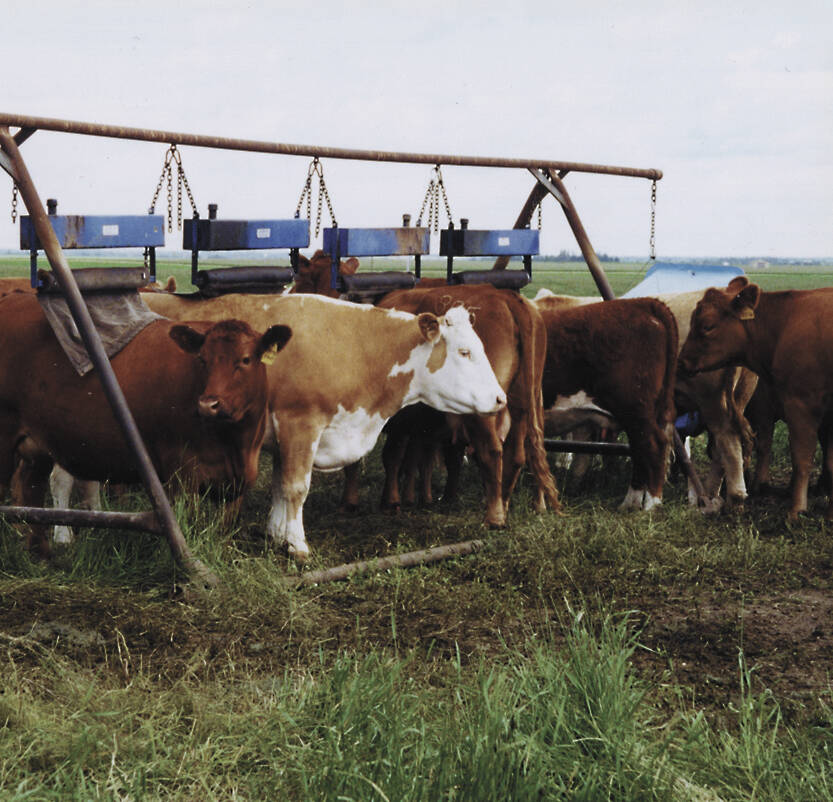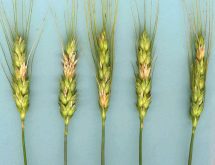It was supposed to have been a benign U.S. government report, a highly provisional glimpse at this year’s crops – something expert grain traders would take note of before going about their business.
Instead, the U.S. Department of Agriculture’s first look at crop production in the United States this year released on Feb. 14 – based on models using prices and other conditions from up to three months ago – walloped corn and soybeans.
The selling continued on Feb. 15 on lingering pressure from the USDA’s so-called baseline report that feeds into the proposed 2011 national budget unveiled on Monday. On Feb. 16, corn futures closed mostly steady.
Read Also

Shifting standards on cattle parasite control
Parasite product resistance has more farmers and veterinarians thinking differently about how to control issues like lice or worms.
The unexpected market reaction to a usually uneventful set of data threw into sharp relief the influence of a new breed of investor whose numbers have been growing in recent years.
“I wouldn’t call them neophytes, but these are the new kind of investors who do not know the nomenclature of the grain business,” said analyst Dan Basse of AgResource Co.
“They see the stamp of the USDA on these numbers, and that’s it for them. What will they do when the USDA comes out with another set of numbers next week?” he said. The USDA will revise those projections at its annual Outlook conference Feb. 24 and 25, considered a more up-to- date snapshot.
Doing trades mostly on screen, these investors, that include hedge funds and deep-pocketed speculators, often blindside floor traders with their deals, as on Feb 14.
An analysis of the USDA’s annual baseline projections for corn acreage over the past decade shows that the forecasts topped the USDA’s March planting intentions estimates six times and came in below the March data four times.
In 2009, the baseline projections exceeded the March estimates by three million acres and in 2006 by 2.5 million,
or three and 3.5 per cent respectively. But in 2007, the baseline projections were 4.5 million, or five per cent, acres below the March forecast and 1.5 million under in 2001.
For soybeans, the baseline projections exceeded the March forecasts in seven years and were below in the remaining three. In the four of the past five years, the baseline projections exceeded the forecasts in March.
Between 2008 and 2010, the baseline projections topped the March estimate by between two million to 3.8 million acres, or 2.6 to five per cent. In 2007 it was 3.9 million acres, or 5.8 per cent, below the March forecast.
Corn futures at the Chicago Board of Trade closed unchanged on Wednesday, after easing some 2.2 per cent since Feb. 14. Soybeans fell two cents to $13.66 on Feb. 16, losing 3.4 per cent since Feb. 14.
The trigger for the selling that began on Feb. 14 was the USDA forecast that U.S. farmers will plant a record 92 million acres with corn this spring, up four per cent from last year.
The department said soybeans would be planted on 78 million acres, up nearly one per cent. U.S. wheat was forecast to be planted on 57
million acres, up six per cent from last year.
The so-called baseline projections are not based on surveys of farmers and do not take into account abnormal weather or business cycles that might affect global supply and demand.
“As such, the baseline is a neutral backdrop, reference scenario that provides a point of departure for discussion of alternative farm sector outcomes that could result under different domestic or international assumptions,” the USDA says.
NEW-STYLE TRADING IN GRAINS
“The USDA baseline projections reflect a composite of model results and judgment-based analysis,” the USDA said, adding the “core domestic analysis takes place in November.”
Grains analyst Shawn McCambridge of Prudential Financial said that with grain prices at around 2-1/2-year highs, markets are “extremely sensitive anytime the USDA opens its mouth.”
He said new-style trading techniques, including algorithmic trading or high frequency trades, might not be as well suited for grain markets as they are for equities or currencies.
“I have always said using formulas to trade in ag commodities like they do in equities can be very difficult. These things work in certain situations and for short periods of times,” he said, adding that the record-high prices hit in the food crisis of 2008 were erased within a few months.
“There are new influences in the market, and they are a part of the evolution of this trade. They are bringing in other trading methods into the market,” he added.
There has been an exponential growth in the positions held by non-commercial entities – which include hedge funds – in CBOT grain futures, according to data from the Commodity Futures Trading Commission.
On Dec. 27, 2005, this group held about 566,000 contracts of long and short positions in CBOT corn, soybeans and wheat futures. By Feb 1 this year, its positions have more than doubled to 1.25 million in all three commodities.
———
“Iwouldn’tcallthemneophytes,buttheseare thenewkindofinvestorswhodonotknow thenomenclatureofthegrainbusiness.”
– dan basse of agresource co.














